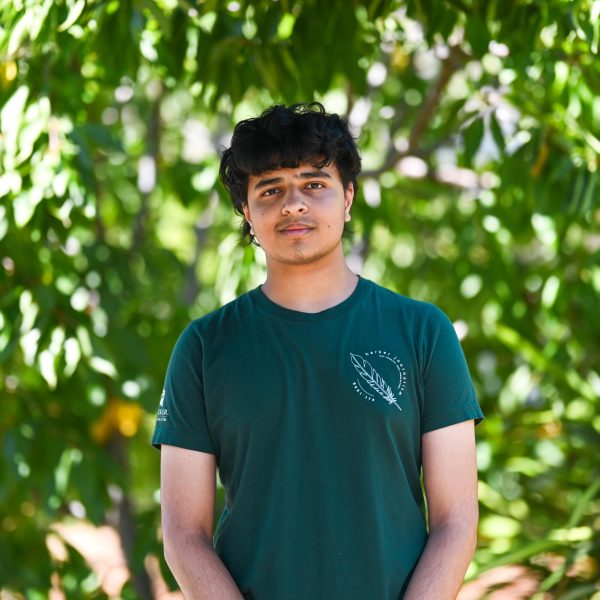
India has unveiled ambitious plans to send an astronaut to the moon by 2040 and establish its own space station, “Bharatiya Antariksha Station,” by 2035, as Prime Minister Narendra Modi announced on Tuesday Oct. 17. During that announcement, he also called for scientists to work on Venus and Mars missions and develop a plan for future moon exploration. This comes on the heels of the successful Chandrayaan-3 mission, which established India as a serious player in space exploration.
Jet Propulsion Laboratory test engineer Brad Kinter noted how India’s strides in this sector benefit the whole world due to the highly cooperative nature of space exploration. With India signing the Artemis Accords, there are plans for it to collaborate with the nations running the International Space Station to send an Indian astronaut up in 2024. Kinter believes that the environment of friendly competition helps push humanity as a whole onwards and upwards, as scientific innovations and discoveries are not confined to specific countries.
“Some of these countries don’t really have a platform to get started on their own, but they still have very talented engineers,” he said. “We all have a common goal to explore, and these [innovations] really push the envelope faster than we could do on our own.”
India successfully landed its Chandrayaan-3 mission spacecraft on the south pole of the moon on August 23, joining the ranks of the United States, Russia and China. The moon lander, Vikram, also carried a solar-powered lunar rover named Pragyan, equipped with two navigational cameras for viewing as well as a spectrometer and spectroscope for identifying the chemical composition of samples. Through this mission, scientists hoped to identify water on the moon and map the terrain of the moon’s south pole. India’s Vikram lander is the first spacecraft to touch down on the south pole of the moon, a region unexplored by humans.
“The fact that India is now in that very elite group of nations that can work toward a really lofty goal and achieve it is very exciting,” upper school physics teacher Mark Brada said. “So, it’s great for India for sure, but it’s also great for the world too because more nations are able to achieve high levels of technical achievement.”
With Chandrayaan-3, the Indian Space Research Organization (ISRO), India’s national space agency, hoped to achieve a safe and smooth landing and then deploy and collect chemical data with the Pragyan rover. They hit both of these targets.
India’s LVM3 rocket, carrying the lunar lander and rover, launched from Satish Dhawan Space Centre on July 14. The Chandrayaan-3 mission continues the work of the previous Chandrayaan-2 lunar mission, which ended after the spacecraft crashed into the surface of the moon due a thruster malfunction in a fashion similar to Russia’s Luna 25 failure. The thruster on Russia’s lander fired for 50% longer than it should have, leading to it crashing into the Moon. Astronomy club member Cynthia Wang (12) attributes India’s recent success to their methodical trial and error process as they eliminated the problems that had led to past failures.
“It just comes down to precision,” Cynthia said. “[Because] India had failed a few years before, they already knew what went wrong with the first drone landing in the same location. After seeing those calculation errors and observing those mistakes, they were able to [correct] that in this current mission, which allowed them to successfully land in the south pole.”
Indian astronomer and physicist Dr. Vikram Sarabhai founded ISRO in 1969 with the goal of advancing India’s space initiatives, and the organization has since grown into a space agency on par with the world’s best. Currently, the agency operates one of the largest satellite constellations globally and plans to send astronauts to space in the near future.
Chandrayaan-3 isn’t the first lunar rover launched by ISRO. Unlike Chandrayaan-2, which crashed during landing, Chandrayaan-1 landed successfully on the moon in 2008 and carried out missions similar to the current one, including surveying the landscape and detecting traces of water-ice on the moon. Going forward, ISRO wants to set up its own space station with the capability to support three astronauts, in addition to expanding its satellite sensing capabilities. Additionally, a Mars orbiter, crewed mission to the moon, and space telescope are all in the works. These missions highlight ISRO’s growing capabilities and suggest that the field of space exploration has a bright future ahead.
“Mankind is going to face challenges due to climate change, and the means to observe and manage them can be done through satellite technology,” said ISRO’s deputy director Dr. Rajashree Bothale. “Apart from this there is a need to explore other planets; going to [the] moon and Mars are obvious steps in those directions.” “[The] future [of] space technology is very bright.”


















![“[Building nerf blasters] became this outlet of creativity for me that hasn't been matched by anything else. The process [of] making a build complete to your desire is such a painstakingly difficult process, but I've had to learn from [the skills needed from] soldering to proper painting. There's so many different options for everything, if you think about it, it exists. The best part is [that] if it doesn't exist, you can build it yourself," Ishaan Parate said.](https://harkeraquila.com/wp-content/uploads/2022/08/DSC_8149-900x604.jpg)




![“When I came into high school, I was ready to be a follower. But DECA was a game changer for me. It helped me overcome my fear of public speaking, and it's played such a major role in who I've become today. To be able to successfully lead a chapter of 150 students, an officer team and be one of the upperclassmen I once really admired is something I'm [really] proud of,” Anvitha Tummala ('21) said.](https://harkeraquila.com/wp-content/uploads/2021/07/Screen-Shot-2021-07-25-at-9.50.05-AM-900x594.png)







![“I think getting up in the morning and having a sense of purpose [is exciting]. I think without a certain amount of drive, life is kind of obsolete and mundane, and I think having that every single day is what makes each day unique and kind of makes life exciting,” Neymika Jain (12) said.](https://harkeraquila.com/wp-content/uploads/2017/06/Screen-Shot-2017-06-03-at-4.54.16-PM.png)








![“My slogan is ‘slow feet, don’t eat, and I’m hungry.’ You need to run fast to get where you are–you aren't going to get those championships if you aren't fast,” Angel Cervantes (12) said. “I want to do well in school on my tests and in track and win championships for my team. I live by that, [and] I can do that anywhere: in the classroom or on the field.”](https://harkeraquila.com/wp-content/uploads/2018/06/DSC5146-900x601.jpg)
![“[Volleyball has] taught me how to fall correctly, and another thing it taught is that you don’t have to be the best at something to be good at it. If you just hit the ball in a smart way, then it still scores points and you’re good at it. You could be a background player and still make a much bigger impact on the team than you would think,” Anya Gert (’20) said.](https://harkeraquila.com/wp-content/uploads/2020/06/AnnaGert_JinTuan_HoHPhotoEdited-600x900.jpeg)

![“I'm not nearly there yet, but [my confidence has] definitely been getting better since I was pretty shy and timid coming into Harker my freshman year. I know that there's a lot of people that are really confident in what they do, and I really admire them. Everyone's so driven and that has really pushed me to kind of try to find my own place in high school and be more confident,” Alyssa Huang (’20) said.](https://harkeraquila.com/wp-content/uploads/2020/06/AlyssaHuang_EmilyChen_HoHPhoto-900x749.jpeg)




